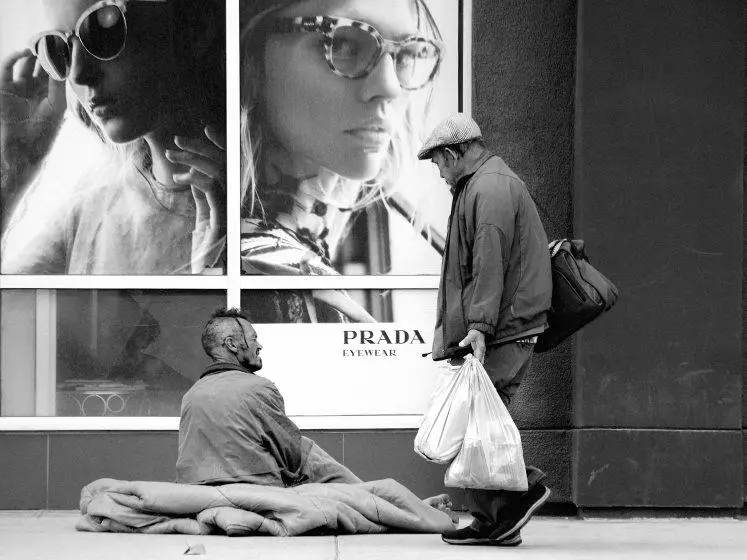Political beliefs shape whether we notice social inequality

Those on the political left in the US and UK are more likely than those on the right to notice social inequality, but only when it affects typically disadvantaged groups.
This is according to new research from The London School of Economics and Political Science (LSE), Northwestern University, the University of Exeter and the University of Michigan, published this week in the journal Proceedings of the National Academy of Sciences (PNAS).
Disagreement about whether some groups face more unequal outcomes and treatment is common in public discussions. For example, debates about the balance between men and women on TV shows often produce polarised reactions. The researchers for this study sought to analyse where these different perceptions come from.
Egalitarians and non-egalitarians
The study’s authors considered two relevant groups across ideological lines: egalitarians, those who believe that groups in society should be equal; and anti-egalitarians, those who are more tolerant of inequality between groups. The researchers found that these ideological beliefs influence whether people detect disparities between groups in a range of settings.
In one experiment, participants from the US and UK were shown photographs of everyday urban scenes and asked to report what they noticed. Some of the images contained cues related to inequality, for example, depicting both a luxury car and a homeless person in the same scene. Egalitarians were more likely to naturally remark on inequalities in the image, while anti-egalitarians were more likely to remark on other aspects.
In other experiments the researchers directly manipulated whether inequality harmed typically advantaged or disadvantaged groups. For example, participants were asked to view the CVs of applicants to an organisation that had just completed their hiring process and learned whether or not the applicants were hired. There were two conditions of the task: the organisation was biased against applicants from ethnic minorities, or the organisation was biased against white applicants.
Attention to inequality applied selectively
"We found that when there was bias against racial minorities, egalitarians were more likely to notice it than anti-egalitarians. In contrast, when there was bias against white applicants, egalitarians were no more or less likely to notice it than anti-egalitarians," said Hannah Waldfogel, a doctoral student at the Kellogg School of Management at Northwestern University, and a co-corresponding author on the study.
"Our results suggest that egalitarians are not more likely than anti-egalitarians to notice all forms of inequality, but rather that egalitarians’ heightened attention to inequality applies selectively to instances where inequality harms typically disadvantaged groups," Waldfogel added.
Existing research suggests people process information in ways that are consistent with their pre-existing beliefs, but this research indicates pre-existing beliefs about the desirability of group equality shape what people notice around them in the first place.
Different social worlds
Dr Jennifer Sheehy-Skeffington, research co-author and Assistant Professor of Social Psychology at LSE, explains, "Our research suggests there is an ideological bias in visual attention: those on the political left actually see more inequality in the world around them than those on the political right, though they are only more likely to notice inequality that harms typically disadvantaged groups.
"This helps shed light on why we have such wide political disagreements about inequality. Those on the left are frustrated that others don’t acknowledge inequalities they see, and those on the right claim egalitarians are playing up inequalities that don’t exist.
"That ideological preferences shape such basic visual processes, even unconsciously, implies that those on the left and the right aren’t just fighting for different social worlds; they are living in different social worlds to begin with."